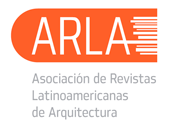URBAN FLOOD CONTROL IN THE NETHERLANDS: A HISTORY
Resumen
ABSTRACT
The Netherlands has a long-standing tradition of protection flood. The article investigates how flood control has taken shape over the last two centuries, and addresses the question how this phenomenon influenced the spatial appearance of Dutch waterfronts. The hypothesis underpinning this paper is that centralization of flood control measures in the Netherlands increased the protection level of these waterfronts but also added to the uniformity of coastal resorts. Centralization also decreased the responsiveness of flood control measures to local needs, which explains the contemporary quest for measures catered to local interests in the Netherlands. To do so, the paper explores the major changes in the approach towards flood control since 1800, and identifies the spatial impact of flood control measures on urban communities. Additionally, it identifies the major drivers for changes in flood protection measures.
RESUMEN
Los Países Bajos tienen una tradición de larga data en lo que respecta a la protección contra las inundaciones. Este artículo investiga de qué manera la protección contra inundaciones ha tomado forma durante los dos últimos siglos, y aborda la cuestión de cómo este fenómeno a influido en el aspecto espacial de frentes de agua holandesas. La hipótesis que sustenta este trabajo es que la centralización de las medidas de protección contra inundaciones en los Países Bajos aumentó el nivel de protección de estos frentes de agua, pero además contribuyó a la uniformidad de los centros turísticos costeros. La centralización también redujo la capacidad de respuesta de las medidas de protección contra las inundaciones a las necesidades locales, lo que explica la búsqueda contemporánea de medidas atentas a estos intereses. Para ello, el documento analiza los principales cambios en el enfoque hacia la protección contra las inundaciones desde 1800, e identifica su impacto territorial en las comunidades urbanas. Además, identifica los principales impulsores de los cambios en las medidas de protección contra inundaciones.
Referencias
Brand, N. (ed.). (2012). European references. International workshop on coastal quality. Delft.
Carasso-Kok, M. (ed.). (2004). Geschiedenis van Amsterdam. Tot 1578. Een stad uit het niets. Amsterdam.
Coastal Quality Studio. (2013). Safety and quality for the Dutch coast: towards 2100. Delft.
Denslagen, W. (2004). Romantisch modernisme. Amsterdam.
Driesprong, A. (2004). Water, gemeenschappen en waterschappen. Wettelijke taken en bevoegdheden in het regional waterbeheer. Den Haag.
Faludi, A. & A. van der Valk (2010). Rule and Order. Dutch planning doctrine in the twentieth century. Dordrecht/Boston/London.
Heems, T. & B. Kothuis (2012). De mythe van droge voeten.
Hooimeijer, F.L. (2011). The tradition of making polder cities. Delft.
Kothuis, B. & Brand, N. (forthcoming Watergovernance) ‘Multifunctionele waterkeringen en legitimiteit. De institutionele achtergrond van het streven naar functiecombinatie met waterveiligheid’.
Meyer, H. (2010). ‘Composition and construction of Dutch Delta Cities’, in: H. Meyer, I. Bobbink & S. Nijhuis (eds.) Delta Urbanism. The Netherlands. Chicago/Washington DC, pp. 64-99.
Meyer, V.J., van den Berg, J., Bregt, A.K., Broesi, R., Dammers, E., Edelenbos, J., Nieuwenhuijze, L. & Roeleveld, G., Meyer, G. (2013). Nieuwe perspectieven voor een verstedelijkte delta. Naar een method van planvorming en ontwerp. Delft.
Monté Verloren, PH de & Spruit, J.E., (1982). Hoofdlijnen der ontwikkeling der rechterlijke organisatie in de Noordelijke Nederlanden tot de Bataafse omwenteling. Deventer.
Rutte, R. (2006). ‘Groei en krimp van de Hollandse stad’, in: Overholland 3, pp.29-56.
Sande, C.M. van der (2009). Design of a Dutch superlevee. Delft.
Steenhuis, M. (2013). De cultuur van de Nederlandse kust: durf te differentieren, in: Atelier Kustkwaliteit, Ecologie, cultuur en economie van de Nederlandse kust. Delft.
Stenvert, R. (ed.) (2004). Monumenten in Nederland. Zuid-Holland. Zwolle.
Stive, M. & Vrijling, H. (2010). ‘Draining, dredging, reclaiming: the technology of making a dry, safe and sustainable delta landscape’, in: H. Meyer, I. Bobbink & S. Nijhuis (eds.) Delta Urbanism. The Netherlands. Chicago/Washington D.C., pp.20-43.
van Dam, P.J.E.M. (2010). Cities and flood control: the amphibious culture in the Netherlands before 1800. Introduction and Paper presented at the plenary openings panel Perception and Management of Disastrous Floods of the conference of the International Water History Association, Delft University of Technology, 17 June 2010.
van der Ham, W. (2002). De Historie. In: van Buuren, M. (ed.) Waterlandschappen, de cultuurhistorie van de toekomst als opgave voor het waterbeheer. Lelystad.
van Tielhof, M. & van Dam, P.J.E.M. (2006). Waterstaat in stedenland. Het hoogheemraadschap van Rijnland voor 1857. Utrecht.
Woud, A. van der (1987). Het lege land. De ruimtelijke orde van Nederland 1798-1848. Amsterdam.







